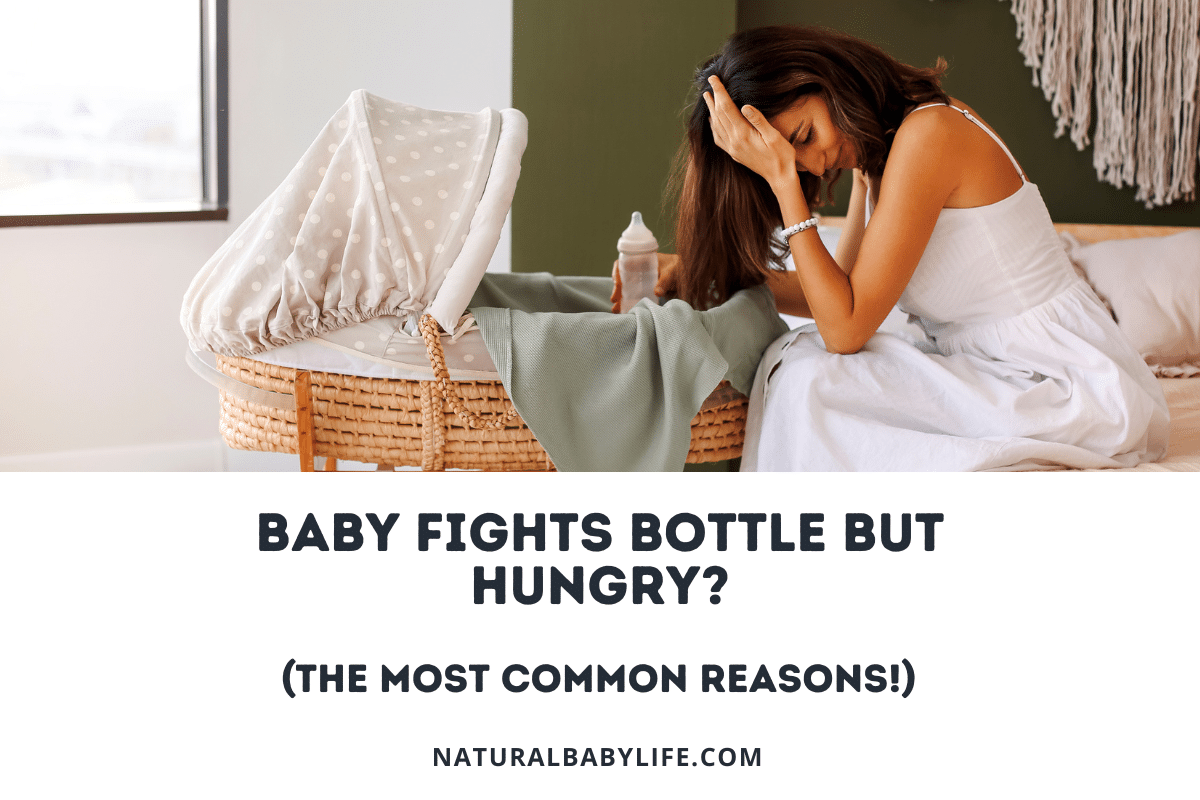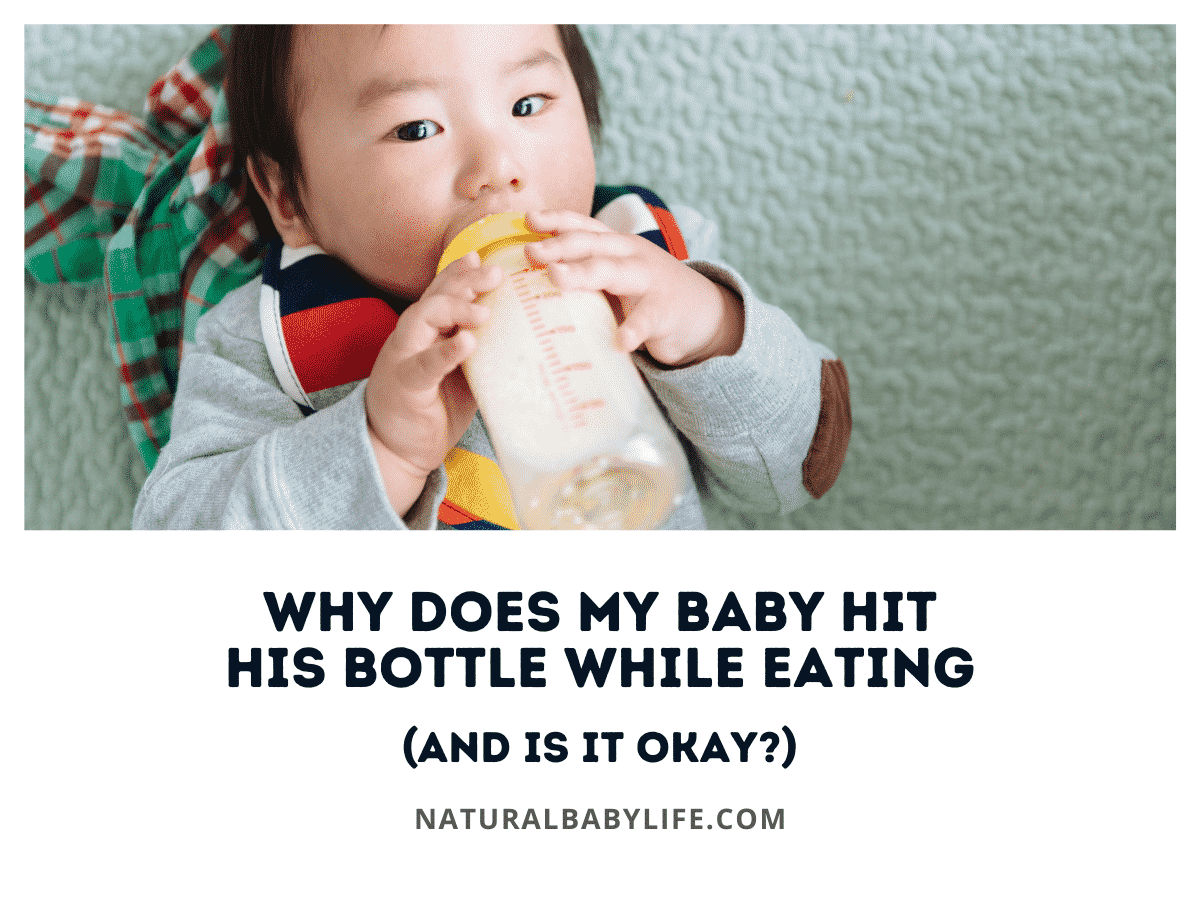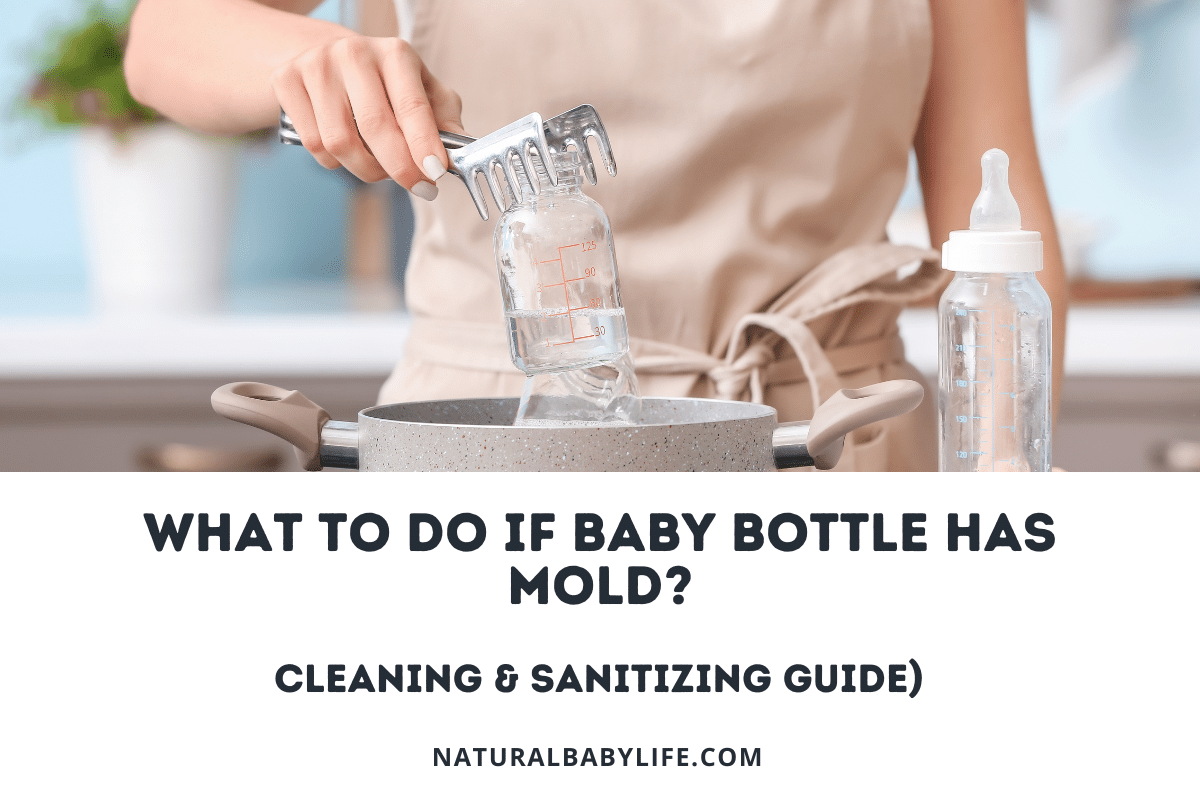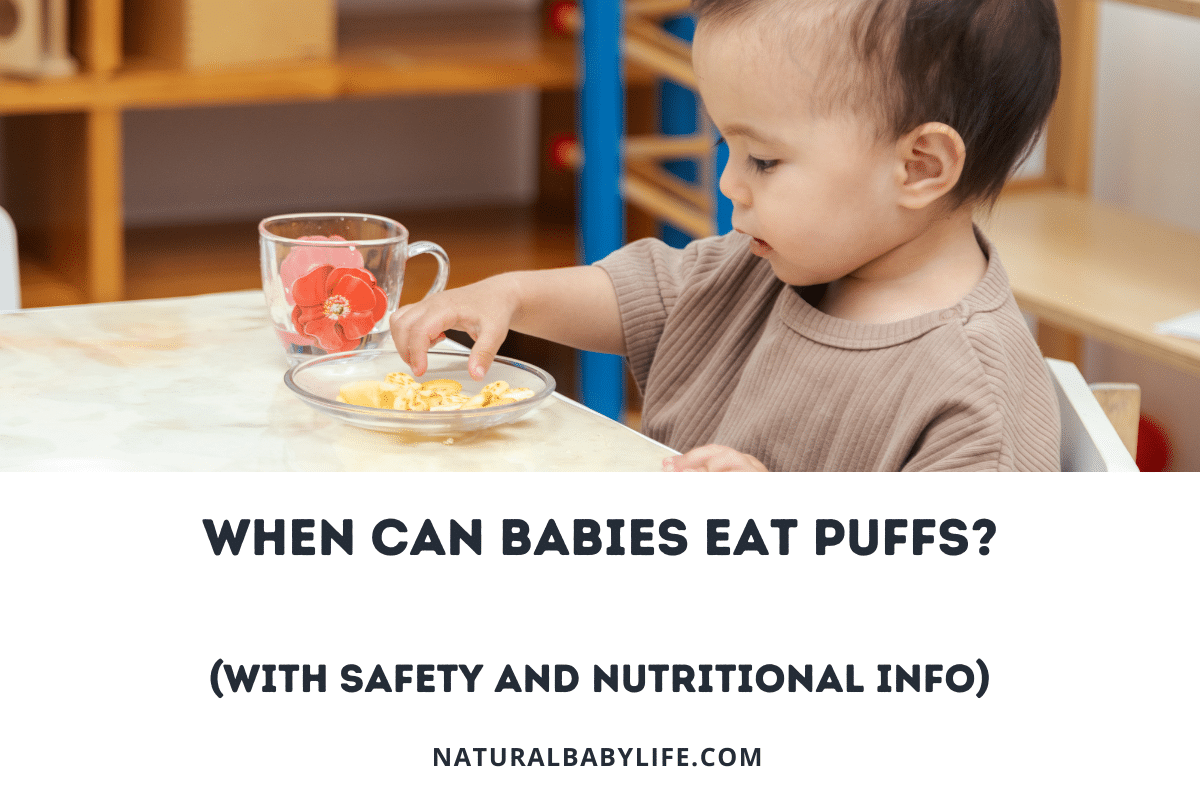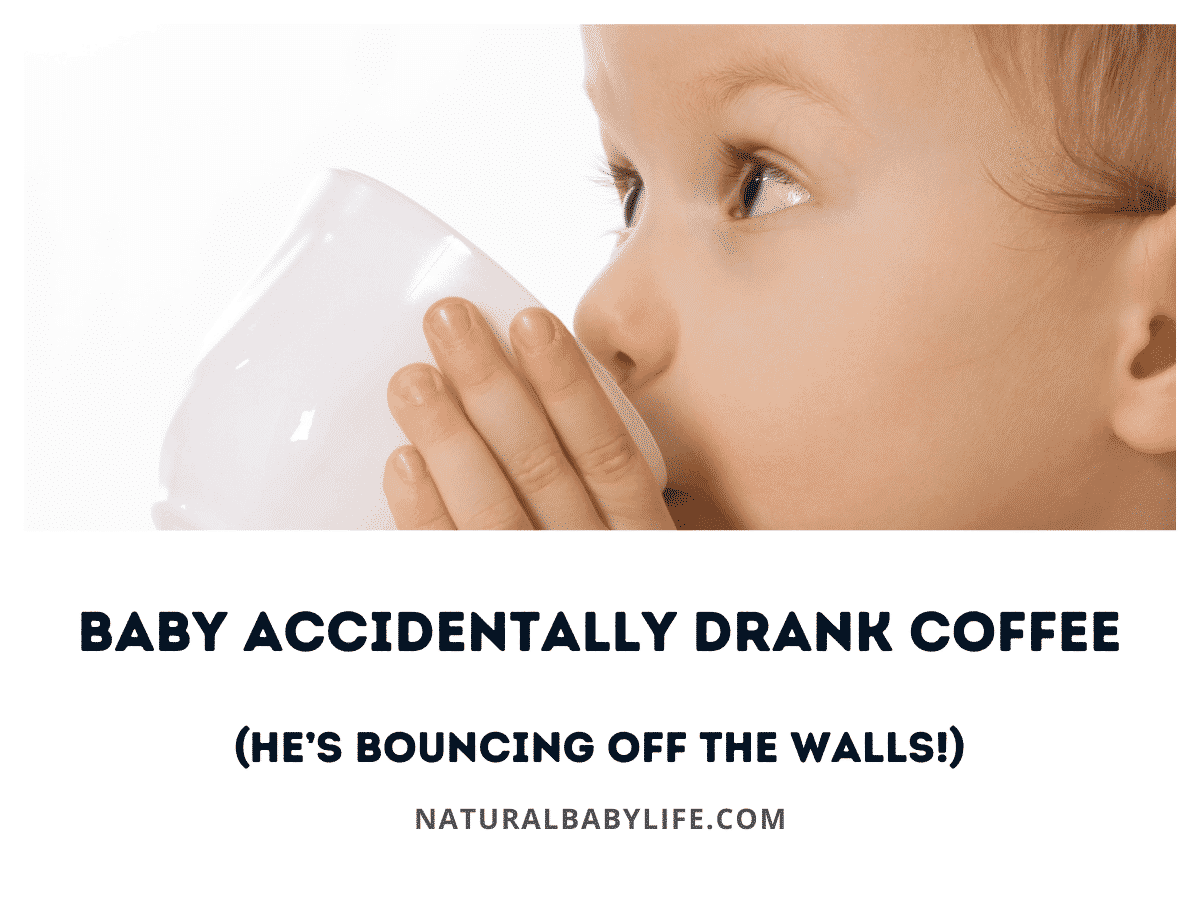It’s happened to the best of us. Maybe your toddler found an old half-finished bottle from somewhere in the house, or perhaps the babysitter forgot to check the expiration date before pouring your little one a sippy cup of milk. If your baby accidentally drank old milk, what should you do and how concerned should you be?
If your baby accidentally drinks old milk, they will most likely be fine since the sour taste discourages them from drinking enough to make themselves sick. While it is possible that your child may experience some food-poisoning-like symptoms, such as vomiting or diarrhea, they should pass quickly – dehydration is your biggest concern in this case.
Read on to learn more about the common concerns of drinking spoiled milk or breastmilk, what signs and symptoms to watch out for, and how to prevent this from happening again.
Table of Contents
Baby accidentally drank old milk
If your little one drank accidentally drank some spoiled milk, you’re probably (understandably) a bit panicked. The good news is that your baby will likely be just fine – and may experience some minor tummy troubles at worst.
With the exception of some dangerous bacteria such as that which could be found in spoiled raw milk, most cases of food poisoning from milk are mild and pass within 12-24 hours.
In addition, not every consumption of old milk will lead to food poisoning, and sometimes old milk is not yet spoiled at all. We’ll cover all of the scenarios as well as their corresponding symptoms in the sections below.
Whether your baby accidentally drank old breastmilk, spoiled milk, or an old bottle of formula, we hope that you can rest assured that accidents happen, and they are likely going to be just fine in a day or two. If your little one is currently experiencing signs of food poisoning or some tummy troubles, just remember that this too shall pass.
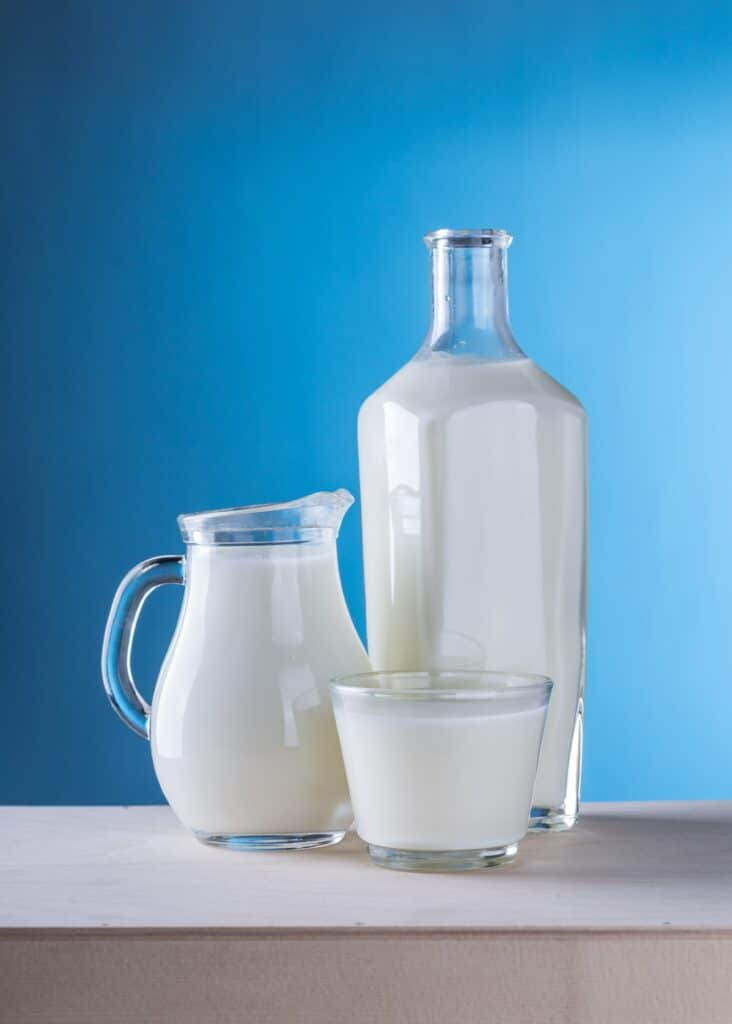
Baby drank old cow’s milk
Milk that has been left out at room temperature for too long can be harmful – even without any obvious signs of spoilage like clumping or curdling. Just a few hours outside of the fridge can allow bacteria to multiply to levels that can cause stomach upset.
On the other hand, milk that has spoiled in the fridge will most likely have significant signs of deterioration such as lumps, a sour smell, and a sour taste.
Milk that has spoiled either at room temperature or in the fridge could make your baby sick if they drink a large enough amount of it to obtain food poisoning.
Rest assured, if the milk was truly spoiled to the point of having changes in texture, taste, and smell – it’s very likely your little one wouldn’t have drunk it at all – or possibly just consumed a very small amount before rejecting it.
Baby drank old breast milk
Breastmilk in general has better resistance to bacteria than cow’s milk or prepared formula.
Freshly pumped breastmilk should be able to last for about 4 days in the fridge before it needs to be discarded or frozen.
However, the concern is that once a bottle has been exposed to the bacteria in your baby’s mouth, bacteria could theoretically multiply to harmful levels in the unfinished milk.
The official recommendation for partially used breastmilk bottles is that they be used or discarded within 2 hours. Even so, many parents find that their breastmilk bottles are able to be safely used again for feeding later in the day if refrigerated properly in-between feedings.
Breastmilk that has begun to go bad will show signs such as clumps that don’t mix back into the milk and a sour taste. Some natural separation is normal with breast milk as the fat will rise to the top, but this should mix back into the milk when shaken.
Due to the naturally anti-bacterial properties of breastmilk, a child who drank old breastmilk will probably not exhibit any symptoms at all but be sure to watch them closely just in case.
Baby drank old raw milk
Raw milk is milk that has not been pasteurized (heated) to extreme temperatures to kill bacteria.
The use of raw milk has become highly controversial in recent years and the purchase of raw milk is even illegal in some states. According to the CDC, children and infants are more susceptible to becoming sick from drinking raw milk.
Most health organizations including the FDA, CDC, and the AAP officially recommend against the consumption of raw milk for pregnant mothers and children.
On the other hand, raw milk is very popular with many natural-minded families. Many babies and toddlers prefer it for its rich, creamy texture and taste.
Fresh raw milk will typically last about 1 week in the fridge. After a week or 2, raw milk will begin to sour and can still be used in other applications (like sour cream or yogurt).
Many families prefer raw milk for this reason, as old raw milk will simply begin to ferment and produce higher levels of beneficial probiotics.
Raw milk that has truly gone bad will begin to smell extremely unpleasant and will eventually begin to separate into curds and whey.
If your baby drank old raw milk, it is important to evaluate how old the milk was and whether or not it was truly spoiled. Watch them closely for signs of botulism or other serious food poisonings as detailed later in this article.
How to tell if milk has spoiled
Milk in the carton can last several weeks and raw milk purchased from a local farmer typically should last about a week in the fridge before spoiling.
Milk or formula that has been served to your little one in a bottle or sippy cup but has not been finished will spoil quickly and should be thrown out after 2 hours. So if you’re cleaning your house and find a half-finished milk bottle that’s been sitting out for who knows how long – the safe bet is always to just throw it out.
However, we know that milk can be expensive – especially if you buy raw or organic milk – and it can hurt to throw it out! After all, there’s a reason for the expression, “don’t cry over spilled milk”! Formula and breastmilk also cost parents a lot in both time and money.
If you aren’t sure your milk has gone bad, there are a few ways to help identify if your milk has spoiled:
- The sniff test – One of the best ways to tell if milk has gone bad is to simply check the scent. Your nose will usually alert you to spoiled milk before any of your other senses.
- The taste test – If you have smelled that half-open carton of milk in your fridge and are still unsure if it is any good, the next step is the taste test. Even if it smells fine, milk can be spoiled. A quick sip should alert you of anything off. When in doubt, give it a try yourself before pouring a serving out for your little one.
- Texture – Lumpiness is one of the biggest signs that milk has gone bad (think cottage cheese). If you see any clumps or lumps floating in your baby’s bottle or sticking to the sides of the carton – just throw it out.
- Discoloration – In addition to forming clumps, soured milk will often begin to turn yellow. (Note that some discoloration is normal in both breastmilk and raw milk.)
It’s past the sell-by date or expiration date
With all the confusion of expiration dates, best-by dates, sell-by dates, and the difference between open milk versus an unopened carton of milk – it is easy to see how spoiled milk mix-ups can occur.
In general, milk should be good for about a week past the sell-by date. Similarly, once milk is opened, it should be consumed within 5-7 days before it goes bad. You should be able to tell if milk has gone bad by using your senses (taste, sight, and smell) to spot signs of sour milk.
Discoloration, lumpiness, and a sour taste or smell are all clear signs that your milk has spoiled. Eventually, mold and yeast can even begin to grow in the milk.
Old milk becomes dangerous once bacteria have had a chance to grow and any of these signs are present. Slightly soured milk will likely not be too harmful (just think of products like yogurt, cottage cheese, and sour cream) but it is best not to take any chances with your little one’s health.
It’s set out for too long
As a general rule of thumb, milk that has been left out at room temperature for more than 2 hours should be disposed of. (This goes for both prepared formula and plain old cow’s milk, as well as breastmilk that has been exposed to the bacteria in the baby’s mouth.) This is due to the likelihood of bacteria accumulating in warm temperatures.
As tough as it may be, any milk that has been in the “danger zone” of temperatures higher than 40° F for longer than 2 hours needs to be tossed out – even if it smells, looks, and tastes fine.
Similarly, it should go without saying that a bottle of milk left out in the sun on a hot summer day or left in the car where temperatures can rise quickly should be thrown out much sooner than the 2 hours.
Can babies get sick from drinking old milk?
While major, long-term health issues are not likely, your baby can get mild to moderately sick from drinking old milk.
A number of factors are at play in whether or not your little one will experience any symptoms including their age, the type of milk they consumed, how old the milk they drank actually was, and how much they drank.
If you discover that your child has drunk some old milk, you will want to determine how much they drank and whether or not the milk was truly spoiled or just a bit old. You will then want to watch for signs of food poisoning and consider contacting their pediatrician with any concerns.
Symptoms of food poisoning from old milk
As with most causes of food poisoning, the symptoms of food poisoning from drinking spoiled or expired milk can include:
- Stomach Pain
- Cramps
- Diarrhea
- Vomiting
- Fatigue
- Body Aches
- Fever (in some cases)
In most cases, these symptoms should resolve within 12-24 hours as the body clears out the unwanted substance.
Call your child’s pediatrician if symptoms persist longer than a day, and when in doubt, always seek immediate medical attention.
Watch for dehydration
The most severe result for young children is typical dehydration. The younger the child, the more vigilant you need to be about watching for signs of dehydration. Their tiny bodies can quickly become unstable.
Signs of dehydration include:
- a sunken soft spot (fontanelle) on top of their head
- sunken eyes
- few or no tears when they cry
- not having many wet diapers
- being drowsy or irritable
Contact your pediatrician if you notice these symptoms. They may recommend an electrolyte solution like Pedialyte or point you directly to the emergency room for an IV depending on your baby’s age and symptoms.
Symptoms of botulism (from raw milk)
If your family is keen on drinking raw milk, there are a few additional concerns that come with a child who is exhibiting symptoms after drinking it.
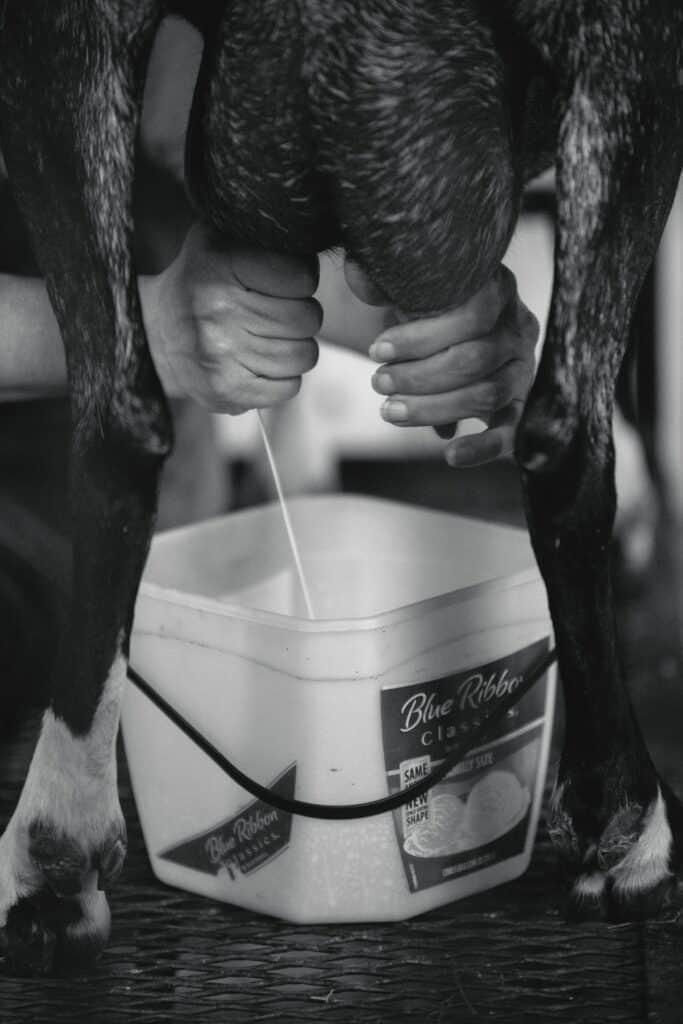
Raw milk can be especially susceptible to dangerous bacteria like botulism since it is not pasteurized (heated to kill bacteria) like the milk you buy in your local grocery store.
If you are buying from a reputable farmer who follows proper health and sanitation guidelines, this risk should be very low.
However, if your little one managed to get ahold of some raw (or even pasteurized) milk that was very spoiled, botulism poisoning is possible.
The symptoms of botulism include:
- Slurred speech
- Blurred vision
- Confusion
- Muscle weakness
- Muscle paralysis
- Trouble breathing
- Trouble swallowing
- Dry mouth
If you suspect your child may have botulism, seek emergency medical care immediately.
What to do if baby drinks old milk
A small amount of old milk is unlikely to cause your little one much harm beyond an upset stomach.
If you are unsure how much spoiled milk your baby has ingested, or how old the milk was, you can contact your child’s pediatrician or give poison control (800-222-1222) a call.
A call to poison control would likely result in the recommendation to rinse out your child’s mouth and offer them plenty of fluids to drink. The biggest concern is to watch for signs of dehydration that can occur with any episode of diarrhea and vomiting. Pedialyte is always a good choice for oral rehydration.
As with any case of food poisoning, you will generally want to avoid giving any anti-diarrhea medications that would only prevent the body from clearing out the harmful substance.
As always, when in doubt seek immediate medical attention from a local emergency room.
How to keep baby from drinking old milk
The best way to avoid the symptoms of food poisoning from drinking old milk is to keep your little one from drinking it in the first place. Life is busy and parenting is challenging so don’t feel bad if this has happened to you!
However, there are some things you can do to prevent it from happening again. You will want to check your milk regularly for signs of spoilage, keep track of all old bottles and sippy cups, label your milk cartons or prepared bottles, and consider switching to organic milk.
Check milk regularly
It is helpful to stay on top of your milk inventory in your fridge, especially if you know that your spouse or other caregivers will be taking over your duties. When grandma or the babysitter is coming over to care for your little one, do a quick sweep of the fridge beforehand.
Regularly checking expiration dates and removing any old, half-finished bottles that didn’t get consumed within 2 hours is a wise idea. (Prepared bottles that haven’t been drunk yet should last about 24 hours in the fridge.)
This will help eliminate any accidentally spoiled milk being given by caregivers or tired parents in a rush!
Keep track of bottles and sippy cups
It is a good idea not to purchase or own too many bottles and sippy cups in the first place.
Many parents understandably continue to buy more cups and bottles as their little ones misplace other ones, but this leads to confusion and clutter later on.
Try to stick with a small set of matching sippy cups or bottles. This way, you can easily count and identify how many bottles are accounted for at any given time, and how many need to be tracked down underneath the couch cushions or in the backseat of the car.
Try to remove old, half-finished bottles as soon as your child is done with them and use naptime to quickly search around the house for any missed sippy cups. Rinse them out as soon as you find them or place them back into the fridge to be consumed within a few hours if you know the milk is still fresh.
Clean out your diaper bag and car regularly as well as any other places you know that old sippy cups and bottles tend to accumulate.
The more you can stay on top of the sippy cup chaos, the less likelihood there is for your little one to find an old, spoiled cup somewhere and drink from it.
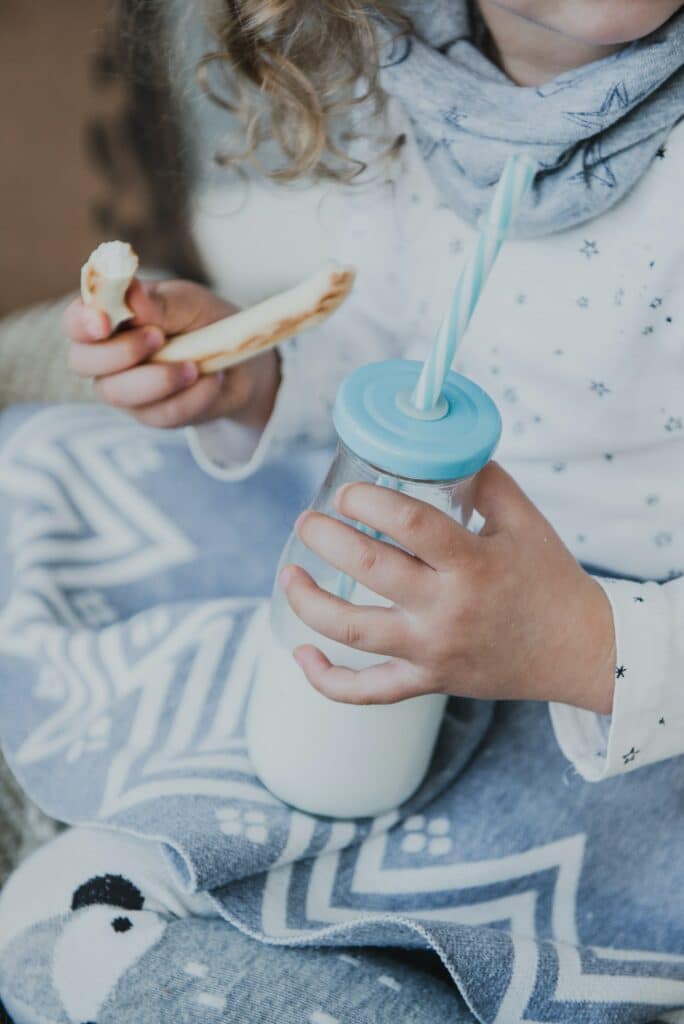
Buy organic milk
Surprisingly, organic milk tends to have expiration dates that are much further out than conventional milk. This is because organic milk is heated to much higher temperatures than non-organic milk.
With an average shelf-life of 40-60 days (unopened) your milk will be much less likely to go bad without you noticing if you buy organic.
Although many parents are wary of the cost of organic milk, the price difference is actually not very great. And if you find yourself regularly throwing out entire containers of milk because you were unable to drink them in time, going organic could actually be a great cost-saver for you.
Stop storing your milk in the door
It is recommended that milk be stored in the interior of your fridge and not in the fridge door.
Every time you open the door, the objects on the door shelves are being exposed to warm air. Your milk will last longer if you can keep it stored towards the back of your fridge instead.
Label bottles & milk cartons
This is another tip that can be very helpful when you have parents that switch off regularly for childcare shifts or if you have multiple caregivers coming to your home.
Clearly labeling each bottle or sippy cup with the date and time it was made can be a great way to avoid any accidents or confusion.
Similarly, re-writing the expiration date of your unopened milk cartons on the front of the container with a permanent marker can help you clearly see the date at a glance and help remind you when it is time to throw it out.
If you tend to have more trouble with letting opened milk go bad, then you can label your cartons with either the date you opened it or the date it should be thrown out (5-7 days after opening).
Conclusion
It’s easy to let spoiled old milk creep up on you, but the good news is that the result is typically mild or even harmless to your baby. Dehydration is typically the biggest concern, but you will need to be more vigilant if your baby drinks old raw milk.





